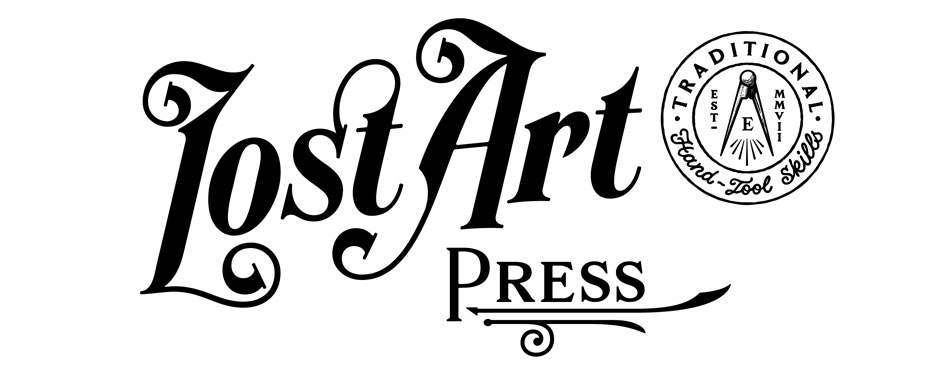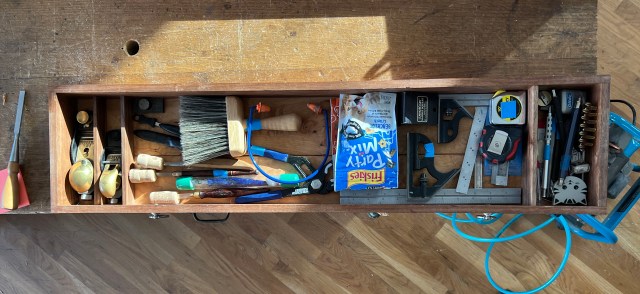
I use colored waxes quite a lot in my finishing, especially the darker colors. I’m partial to Liberon’s Black Bison Paste Wax, but that’s because it is the only brand I’ve ever used.
Colored waxes are a secret weapon when it comes to muting a particularly loud or brash color. They also add a depth to many finishes by adding a second hue to the overall piece.
Many antique restorers use black wax to add age to a finish or a repair, and it’s great for that. But that’s not my goal with black wax. I hope the photos here will explain it better than words.
First, ignore the sales copy about the stuff.
“(I)t feeds, polishes and helps to prevent wood drying out…” No, it doesn’t.
“Giving a highly lustrous and hardwearing finish…” It actually gives a low-luster finish. And, like all waxes, isn’t particularly durable.
“Well-known for its quality and pleasant, distinctive aroma…” Uhhh, this stuff smells like a 1950s cleaning solution for septic tanks. It is not pleasant. But the smell dissipates.


Here’s what it really does. It’s a fast-drying sludge. Pick a color. I use “Dark Oak” and “Tudor Oak” and cannot tell the difference. When you use it on raw wood, such as oak, it will darken the oak and collect in the wood’s open pores. When used on raw closed-pore woods, such as pine, it generally looks like a smeary mess (a test board will confirm this).
I typically use it on top of a finish, either shellac or paint. When used over shellac, it will reduce the brashness of the new shellac, and the wax will collect in the pores of the wood, giving the piece a bit of dimension.
I adore the combination of mahogany, shellac and black wax. That’s what I use on virtually all of my campaign pieces.
When used over paint, the black wax gets a little smeary. It will collect in small voids left in the paint. And it will buff off unevenly on the paint. This is a good thing. A bright new paint finish can look like you dipped your furniture in Plasti-Dip. The uneven absorption of the wax mutes the single color.
Application
The stuff dries quickly, so I recommend you work small areas, about 12″ x 12″. Wipe the wax on generously with a rag so you can push it into the pores and small voids (wear protective gloves). Keep wiping the wax until you have a thin, consistent coat. Then immediately begin wiping it off with a clean, coarse rag (I use towels with a Huck weave – basically surgical towels). Keep wiping until you cannot remove any more. Then move on to the next section of the project.
If you botch a section, simply apply more wax. The wax’s solvent will dissolve the hard layer and you can wipe again. Or dab some mineral spirits on a rag and you can rub the surface to remove thin layers of wax until you get the effect you want.
If at any time you hate the finish, flood the surface with mineral spirits and rub hard. Most of the wax will come off.

Test Boards
Making test boards is the only way to ensure you will get the effect you want. I’ve used the wax for decades and still do a test board before I start smearing the stuff on anything.
A tin of this stuff lasts for many years, so don’t be put off by the high price (about $35-$40 here in the U.S.). Don’t be put off by the smell (we call it the “stinky janitor” wax because it smells like some cleaning fluid from my childhood). And don’t be put off by the bison part. I think there’s hardly any bison in the wax.
– Christopher Schwarz











